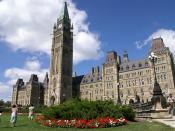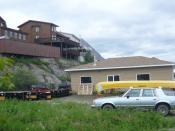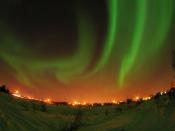The main type vegetation in this ecozone is the Taiga forest consisting of stunted coniferous trees, such as black spruce, jack pine, paper birch, trembling aspen, etc. The northern edge of the ecozone is bordered by the treeline.
Wildlife:
This region is famous for one of the most impressive displays of wildlife: 50 species of mammals including the barren-ground caribou, wolf, lynx, arctic fox, the grizzly bear, etc.
Also, there is a massive bird migration of swans, geese, loons, ducks, tree sparrows, etc. every spring, making the region a popular destination for birdwatching.
Along the marine coast, the area is inhabited by animals like walrus and seal. A few reptiles such as the blue spotted salamander are also found in the region.
Unique Features:
The unique features of the region include an active exploration of diamonds, the oldest rock on the planet from the Precambrian era, a relatively large population of the bald eagles (endangered species), only four hours of sunlight in the late December (specifically on Dec.
21), and the midnight sun.
Human Activities:
The major cities found in the region are Yellowknife, Labrador City, Happy Valley-Goose Bay, and Uranium City. The total population is 34000 and out of this, 17500 live in Yellowknife! The main occupations in the region are mainly related to mining, because of the high concentration of metallic minerals. Others include hunting, trapping, fishing, tourism, hydroelectricity (on the Churchill Falls), and forestry. If you want to get around this ecozone, the best ways recommended are by a dog sleigh or a snowmobile. You can also use air transportation, trains, and roads in the major cities.
Cultural Highlights:
60% of the ecozone's population is first nations. The region represents a unique cultural blend of the Dene, the Métis, and the Inuit. There are many...



Good presentation
I like the way you organized the paragraphs. Each paragraph is fully developed and very informative.
4 out of 4 people found this comment useful.